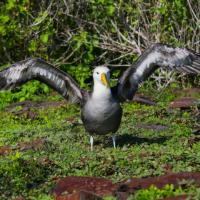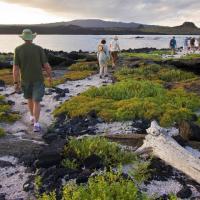The Holbrook Explorer
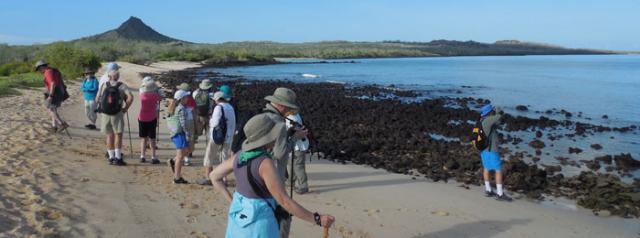
Reflections on the "Enchanted Islands"
Reflections on the "Enchanted Islands"
With curious, unafraid wildlife, remarkable volcanic landscapes, and colorful endemic flora, the Galápagos Islands delight and surprise visitors at every turn. Here, three Holbrook staff members reflect on their own experiences and favorite memories from the aptly dubbed “Enchanted Islands.”
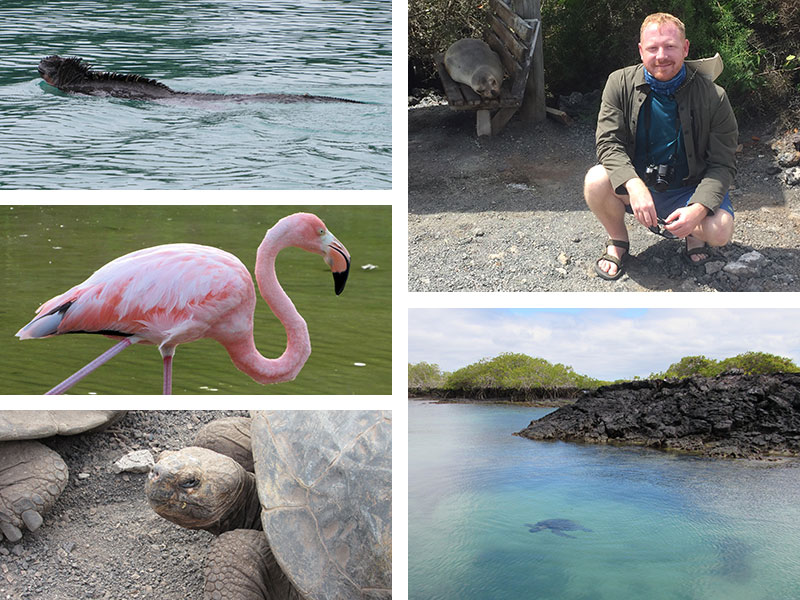
A dream come true
by Kevin Van Dien
"The Galápagos Islands are a must-visit destination for anyone interested in unique animals and geological formations. I had the opportunity to experience this in 2019, and it’s really hard for me to decide which part I liked best. Visiting the islands by boat and actually staying on the island both have interesting benefits.
I’m a marine science nerd, so I think my favorite parts were in the water. Almost every day, we had the opportunity to snorkel alongside sea turtles, rays, sea lions, and tropical fishes. Snorkeling along the wall of a giant volcanic caldera at Genovesa Island was like being in an enormous aquarium, and that memory will stick with me forever.
But then there are the reptiles, my first passion. Since I was a child, I had read about marine iguanas and giant tortoises. Seeing them up close and exhibiting no fear of humans was a dream come true. When I’m stressed out and need to go to a “happy place,” I can now imagine myself sitting in a green field among huge prehistoric-looking tortoises who are peacefully munching on wildflowers, seemingly without a care in the world."

A "wow" moment
by Chris Bensley
This was one of those instances in travel when a sudden change in landscape takes your breath away and tells a story in geology you couldn’t get from any book. It happened on a trip to the Galápagos not long ago with a small group of travel planners. We were doing a combo land and sea "inspection" of eco-lodges, yachts and excursions. This particular morning, we awoke to heavy mist at Scalesia Tented Lodge and drove to a trailhead up the road to hike to Sierra Negra. We set out on a 90-minute walk through light drizzle.
I am fortunate to have traveled extensively in my lifetime, so it takes a lot to surprise me. I’ve been lucky to see the Serengeti plains, the Morocco Sahara, and the ice in Antarctica. Our group walked and talked, shared stories, and listened to our dynamic guide, Sandra, as she pointed out unique plant species and bird life. I had read our materials on the history of the Galápagos, its diverse ecosystems and species evolution. I’ve seen documentaries that tell how the earth is constantly changing with volcanic activity and tectonic shifts. But I was not prepared for the scene ahead of us.
As we neared our destination, the rim of Sierra Negra, the clouds were giving way to the sun’s rays. We walked up the last few steps. I was behind the group and my first indication that we had arrived was that the conversation had stopped. Silence. Wow. Out in front was a huge expanse of black. The caldera stood in sharp contrast to the landscape we’d left, and we stood in awe of what a volcanic eruption can do. Then the thought that the islands were shaped in this way, and that all the species of flora and fauna that live today came after. In time. A long long time. It was a "wow" moment.
We read and write about how travel teaches us and brings education to life, and this was a testimony to this truth.
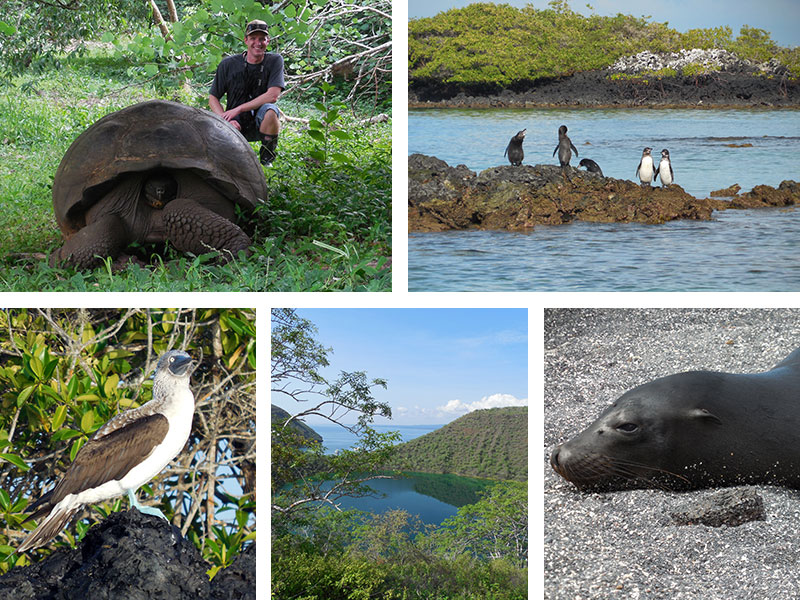
A once-in-a-lifetime opportunity
by Ryan Dunleavy
We arrived at the hot, arid climate of Baltra Island and immediately crossed the channel to transfer to the highlands of Santa Cruz. Within an hour, the landscape abruptly changed from arid to full of vegetation and wildlife. We were greeted by giant tortoises and walked through a long, fascinating lava tunnel. Going up one side of Santa Cruz, we came down on the other end of the island to Puerto Ayora. The port was a beautiful hub where most yachts greet their new travelers. Our group, along with our leader and the boat crew, toasted a welcome-aboard cocktail after our anchor-lifting as we set sail for Puerto Villamil, Isabela Island. After dinner I went upstairs almost every night to feel the tranquility of the atmosphere around me. The night sky in open water is better than any planetarium.
The next six days would include sights one sees on a nature documentary. If the remarkable varied geology wasn’t enough, each island we visited appeared to have its distinct characteristics of wildlife. Fernandina Island was the prime habitat for marine iguanas, while Santiago Island hosted whitetip reef sharks. To see it all, North Seymour Island is the place. During the spring months, it is the perfect time to witness Magnificent Frigatebirds and Blue-footed Boobies conducting their courtship rituals to attract other mates within the location.
Upon departure, I was so thankful to receive this once-in-a-lifetime opportunity. This trip is something that will make me look back and smile, and I look forward to my next adventure – wherever it may take me.

